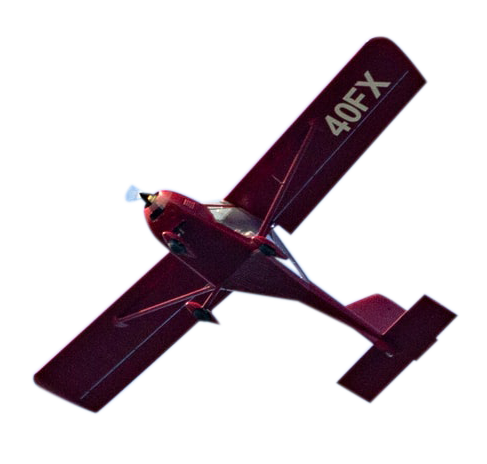 Using a Transponder
Using a Transponder
Transponders are a vital tool for safety. They are useful for ATC, for the Traffic Collison Avoidance Systems (TCAS) systems in large aircraft and also with the advance of Electronic Conspicuity (EC) technology, for pilots of sport and recreation General Aviation aircraft who are now incorporating the systems that can give greater situational awareness. To all they provide provide a significant safety net against mid-air collision risk.
Transponders, especially when altitude equipped, boost controllers’ situational awareness and the likelihood they will be able to help aircraft, particularly those that appear they may stray into controlled airspace.
The benefits of using transponders are now effectively the same for both sides of the air traffic management equation:
MONITOR – the aircraft’s position and altitude can be monitored from the air or the ground.
ACQUIRE – information about the aircraft can be acquired by many different users. Once acquired the system or controllers can identify if there is a threat to safe operations.
SEPARATE – information is used to achieve separation of aircraft from each other.
CO-ORDINATE – the information supplied can allow simple coordination (between aircraft or air traffic units) to aid the progress of the flight or to coordinate separation.
Civil aircraft may be equipped with transponders capable of operating in different modes:
- Mode 3A equipment transmits an identifying code only.
- Mode C equipment enables the ATCO to see the aircraft’s altitude or flight level automatically. This mode is commonly known as ALT.
- Mode S equipment has altitude capability and also permits data exchange such as callsign and registration.
Transponders have an IDENT facility which causes the aircraft radar response to stand out when the pilot operates the ident switch in the cockpit. This should only be operated upon ATC request.
Practical steps
Always ensure your transponder is on before taking off and, if it is able to give altitude information, that this function is selected. Standardised European Rules of the Air (SERA) Section 13* refers to SSR transponder use and outlines the legal requirements; a summary of the key operating requirements within it is detailed at the end of this narrative. Transponders should also be regularly maintained; this ensures they are giving the correct altitude information to controllers and other aircraft. Air Traffic Units equipped with surveillance equipment are able to provide a further serviceability check. Pilots of non-powered aircraft are encouraged to operate a transponder during when flying outside airspace where carriage and operation of SSR transponder is mandatory. Whilst there is a safety risk associated with an airspace infringement, there is also the issue of major disruption. Controllers must try and ensure traffic they are responsible for avoids an infringing aircraft by 5NM or 5,000 feet (in some airspace this may be reduced to 3NM or 3,000 feet). This will inevitably lead to delays to other aircraft and an increased workload for controllers and pilots alike.
A working transponder will aid in identifying the aircraft earlier and ultimately reduce these consequences.
Many air traffic units are also equipped with an airspace infringement alerting tool as an integral part of the radar display. These systems use transponder information to ‘monitor’ the boundaries of controlled airspace and provide an alert to the controller that an infringement has possibly occurred.
What about if the transponder is unserviceable or turned off?
If in any doubt speak to someone. Even if your transponder is not working or is turned off, the flight can still be identified, monitored and traced by controllers using primary radar. It is also a good idea to regularly obtain an altitude readout check from a LARS or another radar unit. ATC will also normally verify the accuracy of the Mode C readout when assigning discrete transponder codes to aircraft. Controllers will assume (also known as ‘deem’) that aircraft without a transponder will be remaining underneath Control Areas when they may not be. Unless they believe an aircraft to be lost, they will continue to vector aircraft in their vicinity or allow aircraft to follow published Instrument Flight Procedures. This may result in an increased risk of mid-air collision as the infringing traffic will have no alerting capability to TCAS.
Legal requirement
In accordance with SERA.13001, when an aircraft carries a serviceable SSR transponder, the pilot shall operate the transponder at all times during flight, regardless of whether the aircraft is within or outside airspace where SSR is used for air traffic service purposes. Pilots are to operate the transponder if equipped and to the full extent of its capabilities. This includes Elementary and Enhanced Mode S and Mode A/C. Pilots of Mode A/C equipped aircraft should note that Mode C should NOT be deselected at any time. Pilots wishing to fly within a Transponder Mandatory Zone (TMZ) should be aware of the requirements which can be found in the earlier tutorial section.
In summary:
- ALWAYS have the transponder turned on and especially where the airspace classification (e.g. TMZ) requires it;
- ALWAYS use the ALT function unless you know it to be unserviceable or likely to give spurious height readings;
- make sure the transponder is well maintained, and you make regular checks for accuracy; and
- if in any doubt about the serviceability then check with ATC.
* From 1 January 2021 the UK law that applies to such aviation rights and obligations are the retained EU Regulations, as amended by various UK Statutory Instruments (made under the European Union (Withdrawal) Act 2018).
Good Practice
Prior to departure, it is a good idea to check the accuracy of your transponder’s Mode C (ALT function). To do this:
- Set 1013 hPa and cross-check transponder to ensure that transponder is within permitted limits (+/- 125 feet).
- RESET either QNH or QFE depending on nature of flight.
- Recheck altimeter/altimeter setting at hold prior to departure

